How to fix peeling wallpaper easily?
Your wallpaper may at some point start to peel off in sections. Don’t freak out! Wallpaper may be re-pasted quite easily. Even while you can always take down all of your wallpaper and hang new wallpaper in its place, re-sticking it is a quicker and less expensive process. Why is your wall covering coming undone? What equipment should I use to apply wallpaper that is peeling? What actions should be taken next? How do you stop your tapestry from acting up once more? Let’s find out!
Table of Contents
Why does wall covering rip off?
There are various explanations for why the wallpaper came off the wall:
installation of pre-pasted wallpaper that has not been completely adhered to the surface, especially at the level of the joints; poor quality of the glue used; excessive extraction of glue from the joints during installation;
poor wallpaper installation Even though many people can perform tapestry installation, it is nonetheless technical. It’s possible that your wallpaper wasn’t installed correctly. In this instance, as the wallpaper ages, the chance of detachment increases.
shocks that create separation;
the humidity is too high: Too much humidity can cause wallpaper to rip off or prevent it from sticking.
Why should the wallpaper be redone?
It is less expensive to restick peeling wallpaper than to hang new wallpaper. Additionally, it goes far more quickly than starting to change your wall covering. You will profit from choosing a wallpaper renovation if the detachment is modest in size and situated in an unassuming area.
If there is a significant tear, you could first try to glue the wall covering. Nothing prevents you from replacing the entire upholstery if the outcome is unsatisfactory.
What substance should be used to restore wallpaper that has peeled off?
Budget-friendly regluing of peeling upholstery is possible. Simply said, you’ll need:
- A dry cloth,
- A wet sponge,
- A spatula or small putty knife,
- A tube of appropriate glue,
- A small brush,
- An upholstery brush,
- A joint roller,
- A cutter,
- And a syringe without a needle are all necessary tools.
How can you re-stick wallpaper that is peeling?
The approach varies based on where the issue originated. If necessary, you won’t proceed in the same manner as:
- re-gluing the lengths’ seams and lengths’ seams’ corners;
- reattach wallpaper fragments with adhesive inside the length;
- grab a blister.
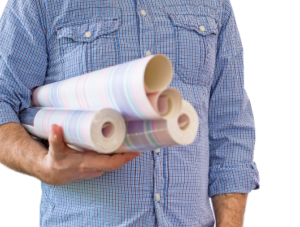
Grasp corners
Using a little putty knife or spatula, gently raise the corner;
Verify the partition beneath the detached portion to make sure it is in excellent shape. It’s possible that you find saltpetre on the walls or that the detachment shows fissures or capillary rise. In this situation, you must resolve the issue prior to repainting the wall covering;
To ensure that the wall’s surface is clean and dry, prepare it with a moist sponge and towel;
Afterward, glue the unglued component.
Utilising the upholstery brush, round off the corner;
the joints with the wooden wheel;
Make use of a damp sponge to remove extra glue.
Glue the strips’ joints together.
moistening the afflicted region first;
Using your little putty knife, slowly pry out the seams;
Check the wall’s condition and take appropriate action based on if there are cracks or humidity;
then cover the peeled-off portion with adhesive;
clean the surface as previously mentioned;
Using the wallpapering brush, seal the joint;
Lastly, roll the joints with the joint roller;
Make use of a damp sponge to remove extra glue.
Gather wallpaper fragments along the length
Pull the wallpaper gently until you encounter resistance in a location where it adheres to the wall well. Avoid going too far or you can tear the tapestry!
Use the sponge, the cloth, and sometimes a tiny spatula to clean the surface. Eliminate any contaminants or glue leftovers. Dry; lightly damp the wallpaper that has been stripped to soften the glue traces. Wipe the wallpaper to get the residue off once it has softened. Dry gently; apply seam glue to the wall where the seam is using a little paintbrush. Be sensible with the amount. Prioritise applying glue close to the area where the wallpaper is still attached to the wall when doing so;
Using a smoothing tool, smooth the wallpaper from the length’s edges to the portion that is still adhered to the wall. Without ripping the coating, press to flatten the glue. After sealing the length’s edges with the seam roller, remove any excess glue by wiping the area with a moist cloth or sponge.
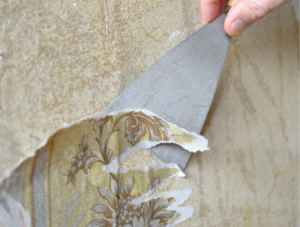
Pick up a blister
Cut open the blister that formed after the wallpaper was installed. This error can be attributed to a shortage of adhesive used during application. the blister’s centre with the blade of your utility knife;
Pass the syringe’s tip, through which the adhesive was previously placed;
inject the necessary quantity of glue;
Pass the joint roller over the blister to help it go away;
Remove any extra adhesive.
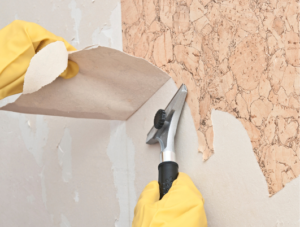
How can peeling wallpaper be avoided?
It’s critical to pay attention to the following components in order to reduce the possibility of the wallpaper pealing off:
Avoid air bubbles during installation; place the wallpaper on a solid wall; and avoid bringing out too much adhesive at the seams. Maintain the proper humidity level in your home to prevent future wallpaper detachment caused by insufficient adhesive at the seams. Utilise a dehumidifier if required.
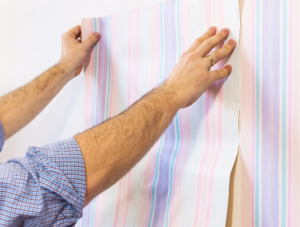
Subscribe For Newsletter
Stay up to date and subscribe now for the latest news and deals.

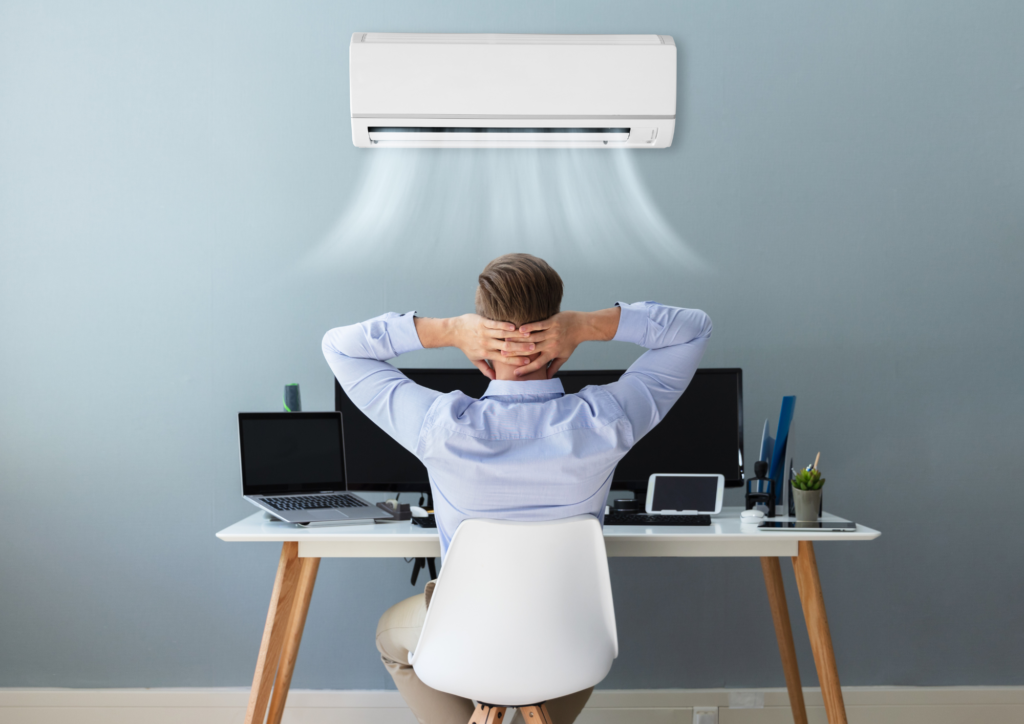

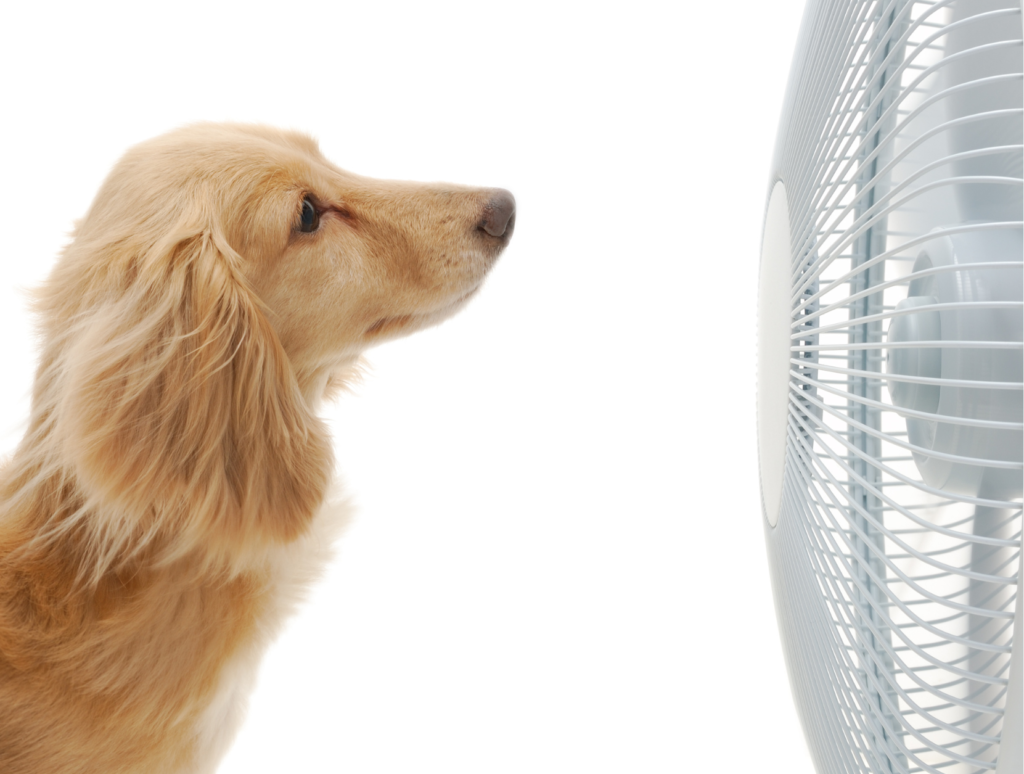
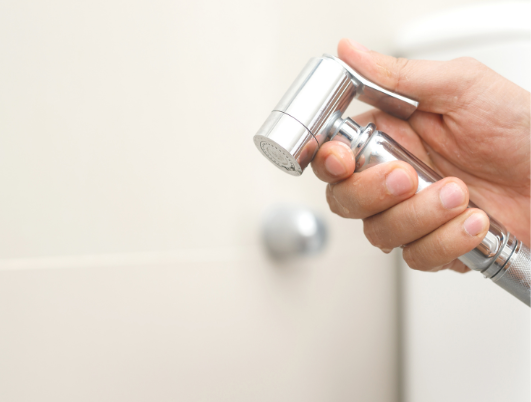


This Post Has 4 Comments
Its like you read my mind You appear to know so much about this like you wrote the book in it or something I think that you can do with a few pics to drive the message home a little bit but other than that this is fantastic blog A great read Ill certainly be back
I simply could not go away your web site prior to suggesting that I really enjoyed the standard info a person supply on your guests Is going to be back incessantly to investigate crosscheck new posts
I appreciate your website, however I think you might check the spelling of a few of your postings. Even though I find it quite difficult to tell the truth because so many of them have spelling errors, I will most certainly return.
I loved as much as you will receive carried out right here The sketch is attractive your authored material stylish nonetheless you command get got an impatience over that you wish be delivering the following unwell unquestionably come more formerly again since exactly the same nearly a lot often inside case you shield this hike